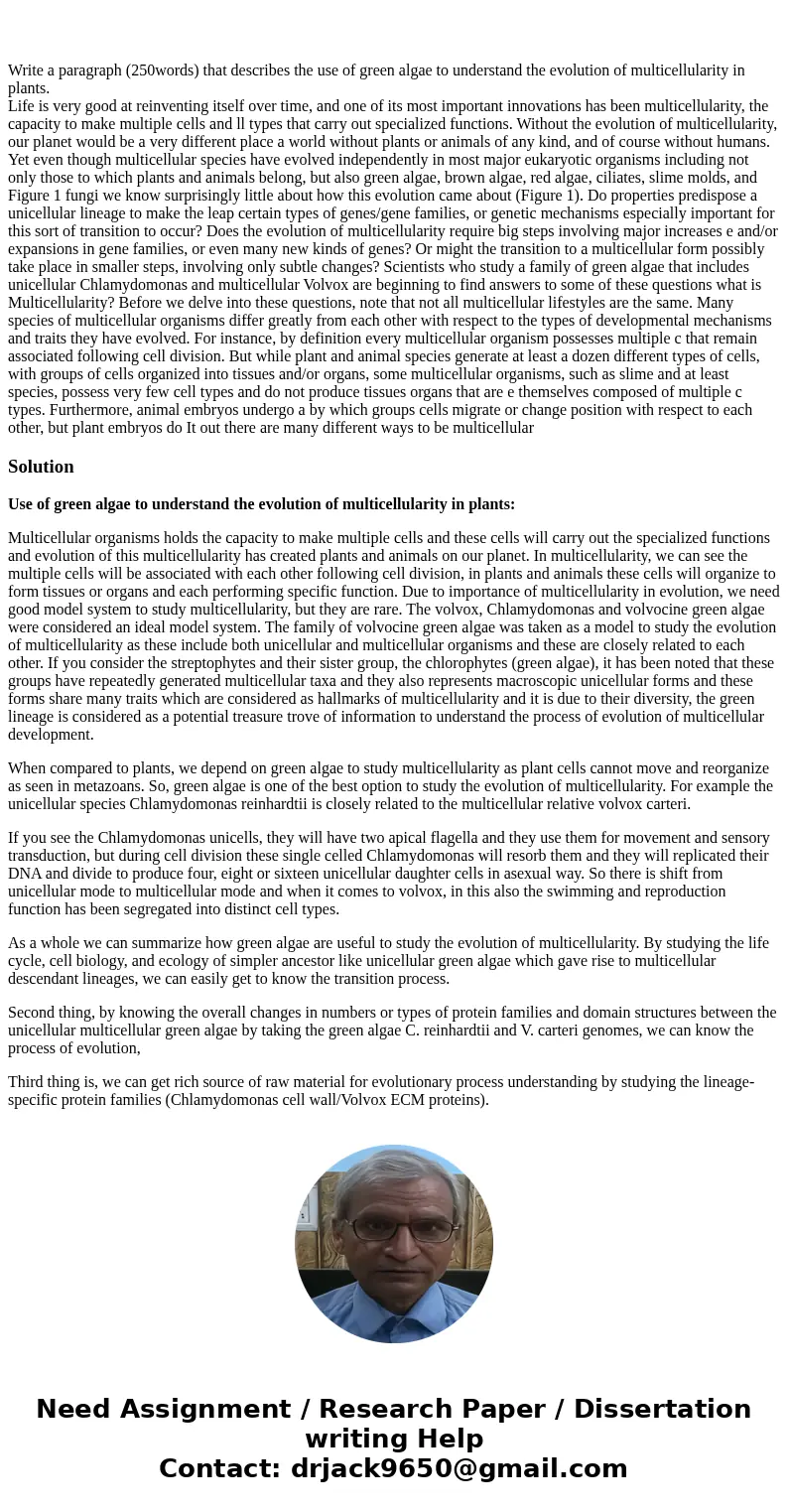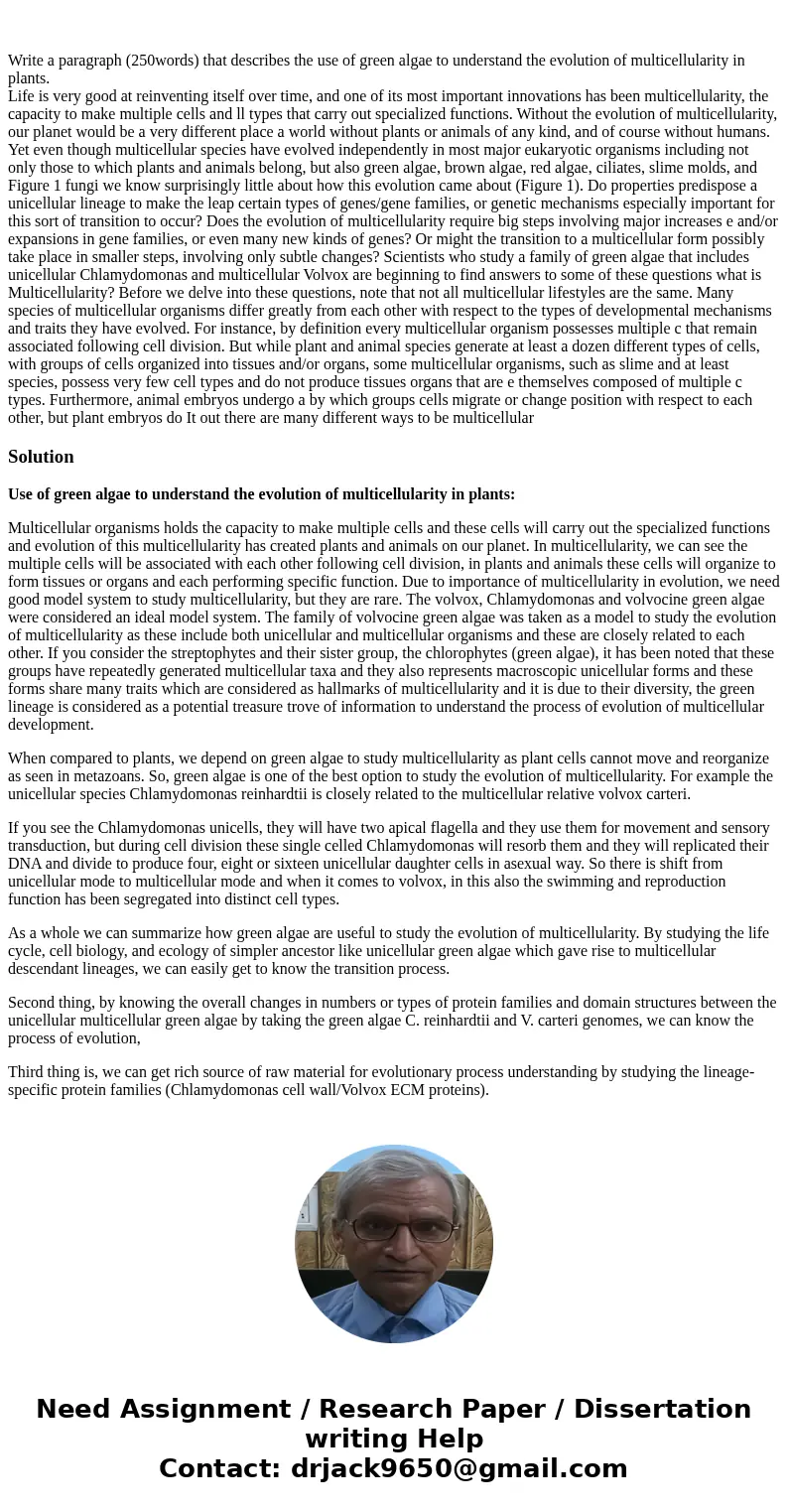Write a paragraph 250words that describes the use of green a
Solution
Use of green algae to understand the evolution of multicellularity in plants:
Multicellular organisms holds the capacity to make multiple cells and these cells will carry out the specialized functions and evolution of this multicellularity has created plants and animals on our planet. In multicellularity, we can see the multiple cells will be associated with each other following cell division, in plants and animals these cells will organize to form tissues or organs and each performing specific function. Due to importance of multicellularity in evolution, we need good model system to study multicellularity, but they are rare. The volvox, Chlamydomonas and volvocine green algae were considered an ideal model system. The family of volvocine green algae was taken as a model to study the evolution of multicellularity as these include both unicellular and multicellular organisms and these are closely related to each other. If you consider the streptophytes and their sister group, the chlorophytes (green algae), it has been noted that these groups have repeatedly generated multicellular taxa and they also represents macroscopic unicellular forms and these forms share many traits which are considered as hallmarks of multicellularity and it is due to their diversity, the green lineage is considered as a potential treasure trove of information to understand the process of evolution of multicellular development.
When compared to plants, we depend on green algae to study multicellularity as plant cells cannot move and reorganize as seen in metazoans. So, green algae is one of the best option to study the evolution of multicellularity. For example the unicellular species Chlamydomonas reinhardtii is closely related to the multicellular relative volvox carteri.
If you see the Chlamydomonas unicells, they will have two apical flagella and they use them for movement and sensory transduction, but during cell division these single celled Chlamydomonas will resorb them and they will replicated their DNA and divide to produce four, eight or sixteen unicellular daughter cells in asexual way. So there is shift from unicellular mode to multicellular mode and when it comes to volvox, in this also the swimming and reproduction function has been segregated into distinct cell types.
As a whole we can summarize how green algae are useful to study the evolution of multicellularity. By studying the life cycle, cell biology, and ecology of simpler ancestor like unicellular green algae which gave rise to multicellular descendant lineages, we can easily get to know the transition process.
Second thing, by knowing the overall changes in numbers or types of protein families and domain structures between the unicellular multicellular green algae by taking the green algae C. reinhardtii and V. carteri genomes, we can know the process of evolution,
Third thing is, we can get rich source of raw material for evolutionary process understanding by studying the lineage-specific protein families (Chlamydomonas cell wall/Volvox ECM proteins).


 Homework Sourse
Homework Sourse